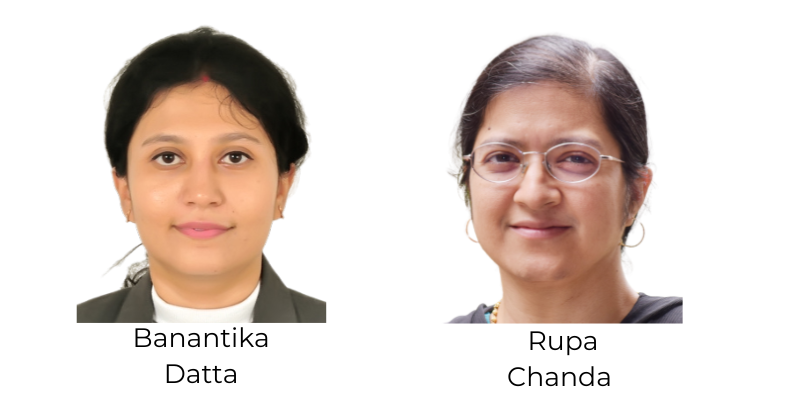Exporting Doctors, Enduring Shortages: How India can Turn Its Paradox into Strength
Bilateral deals, better training and fairer flows of health workers can help India supply global talent while addressing constraints at home.
View as PDF
Banantika Datta: Jagdish Sheth School of Management
Rupa Chanda: Trade, Investment, and Innovation Division of the UN-ESCAP (United Nations Economic and Social Commission for Asia and the Pacific)
SDG 3: Good Health and Well-Being | SDG 17: Partnerships for the Goals
Institutions: Ministry of Health and Family Welfare | Ministry of External Affairs | Ministry of AYUSH
The COVID-19 pandemic exposed how even the wealthiest nations were left vulnerable when hospitals lacked trained staff. In response, governments rushed to attract foreign professionals: the United States issued temporary licenses, the United Kingdom launched special health visas, and Australia allowed international students to work longer hours. These measures made clear what has long been true: high-income countries depend heavily on foreign-trained healthcare workers.
India sits at the heart of this global market. Its doctors and nurses are valued across continents, yet at home the country struggles with shortages, uneven distribution, and gaps in service delivery. This paradox cannot be resolved by closing borders. The challenge is to govern mobility so that India can continue to supply talent abroad while also protecting health equity at home.
A System in Critical Shortage
Headcount ratios suggest India has roughly enough doctors to meet the World Health Organization’s (WHO) basic threshold of one per 1,000 people. But averages conceal deeper problems. WHO assessments, in 2006 and again in 2020, had placed India among countries with a critical shortage of health workers. After a 2020 review by the organization’s Expert Advisory Group, the criteria were revised to focus on workforce density and service coverage, along with due consideration for COVID-19 stresses and vulnerabilities. Subsequently, India was dropped from the list of nations facing the most critical shortages -- a reflection of modified methodology rather than a complete turnaround. The gaps remain stark: as per the most recent 2022 data, the density of doctors (physicians) was 7.2 per 10,000 people, much lower than the WHO’s threshold.
The regional comparison is stark. Sri Lanka spends nearly twice as much per person on health and records far lower maternal and infant mortality rates. Thailand, with under-five mortality rate of just nine per 1,000, performs far better than India, where the rate remains nearly three times higher. These contrasts show that India’s challenge is not only numbers but also quality, distribution, and investment.
The Workforce Mix
India’s skill composition compounds the problem. The country produces only about 81 new medical graduates per million people each year as of March 2025 – far below the OECD average of 142 in 2021. A similar shortfall exists in nursing. This thin skill base weakens the resilience of India’s healthcare system and constrains the quality of care, particularly in rural areas.
The irony is that many of the best-trained professionals migrate abroad. Most leave through informal recruitment channels, exposing them to risks and depriving India of bargaining power in shaping migration outcomes.
Lessons from Abroad
Other countries have shown how mobility can be structured. Germany’s 2012 agreement with Vietnam created quotas, provided pre-departure language and cultural training, and guaranteed hospital placements. Hundreds of Vietnamese nurses have since joined German hospitals under this scheme, which both filled vacancies and invested in long-term professional development.
India, by contrast, remains under-represented in such frameworks. The absence of targeted bilateral agreements [BD7] for health workers leaves its workers facing delays in credential recognition, licensing hurdles, and integration challenges. For India, the cost is even higher: no influence over market access, no guarantees of fair pay, and no mechanisms to encourage return migration.
Reverse Flows Left Untapped
Migration does generate benefits. Two types of “reverse flows” stand out: remittances sent by health workers abroad and foreign direct investment linked to the diaspora. Yet these flows are rarely channelled in ways that directly strengthen the health sector.
At present, there are no systematic mechanisms to connect the outflow of health professionals with reinvestment in training, infrastructure or technology at home. This reliance on individual remittances leaves the national system underfunded. Properly designed agreements could change this, tying mobility to scholarships, training partnerships, or technology transfer.
Beyond Allopathy
Debates often focus narrowly on doctors and nurses, but India’s traditional systems of medicine-Ayurveda, yoga, naturopathy, and others-complicate the picture. Counting AYUSH - Ayurveda, Yoga, Naturopathy, Unani, Siddha, and Homoeopathy - practitioners alongside allopathic doctors inflates workforce numbers.
Yet these systems also represent potential. With stronger quality standards and evidence-based practice, AYUSH could become export strengths in their own right. Telemedicine and regional platforms such as BIMSTEC (Bay of Bengal Initiative for Multi-Sectoral Technical and Economic Cooperation) offer ready-made avenues for projecting this soft power.
Multilateral Norms and Moral Responsibility
At the multilateral level, the WHO’s Global Code of Practice on the International Recruitment of Health Personnel encourages ethical recruitment, discouraging active hiring from countries with critical shortages unless there is consent. Yet compliance remains patchy, and many host countries skirt around its provisions.
This raises an ethical dimension. High-income countries that benefit from migrant health workers have a responsibility to ensure their policies do not deepen inequities in source nations. Structured agreements that promote compensation, training and knowledge-sharing can transform migration from an extractive process into one of shared responsibility. India has both the incentive and the credibility to push for such norms.
The Strategic Choice
India’s health professionals are a source of pride and global goodwill. Their success abroad demonstrates the strength of its education system and human capital. But national pride cannot obscure domestic fragility. No country can afford to export talent while leaving its own citizens underserved.
The choice is between unmanaged flows that deepen the crisis and structured mobility that produces a double dividend. Handled wisely, migration can be transformed from a drain on equity into a driver of resilience. By investing in higher-quality training, capturing reverse flows, and building a distinct strategy for traditional medicine, India can turn its paradox into strength - exporting excellence abroad while building equity at home.
View as PDF
Authors:

The discussion in this article is based on the authors’ working paper on the subject. Views are personal.


